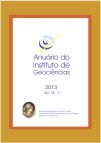Landslides and Newton's Laws
DOI:
https://doi.org/10.11137/2013_2_86_90Abstract
Theoretical and experimental physics can be related to daily life, in order to promote scientific development for educators and serve as a facilitator for student learning. As an interdisciplinary example, the old physics experiment that illustrates the principles of Newton's laws, the moving block on an inclined surface is compared with the forces that contribute to the landslides on slopes as well as particle size influence. The man-made and natural slopes are defined as surfaces of rock, earth or mixed (soil and rock) massif formations. The stability of both slope types is analyzed by the limit equilibrium analytical method using a coefficient or factor of safety (FS), which is given by the ratio between the resistance of the terrain and the driving forces along the surface movement. It was observed that for a smooth-surface rock on a slope formed by grains varying from sand to silt, the sliding happens at a shallower angle compared to a slope where the surface grain is fine gravel. Therefore, rocks slide at different angles depending on the slope grain size.Downloads
Published
2013-01-01
Issue
Section
não definida
License
This journal is licensed under a Creative Commons — Attribution 4.0 International — CC BY 4.0, which permits use, distribution and reproduction in any medium, provided the original work is properly cited.
















 Except where otherwise noted, content on this site is licensed under a license
Except where otherwise noted, content on this site is licensed under a license 